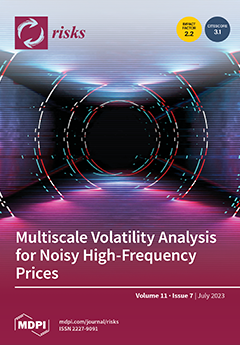Optimal reinsurance problems under the risk measures, such as Value-at-Risk (
) and Tail-Value-at-Risk (
), have been studied in recent literature. However, losses based on
may be underestimated and
allows us to account better for catastrophic losses. In
[...] Read more.
Optimal reinsurance problems under the risk measures, such as Value-at-Risk (
) and Tail-Value-at-Risk (
), have been studied in recent literature. However, losses based on
may be underestimated and
allows us to account better for catastrophic losses. In this paper, we propose a new family of flexible risk measures denoted by
, which is a weighted combination of
and
. Based on the new risk measures, we deal with the optimal reinsurance problem by minimizing the
of the total risks of an insurer when two types of constraints for reinsurer’s risk exposure are considered. The results indicate that the two-layer reinsurance is always an optimal reinsurance policy with both types of constraints. Also, we find that the optimal reinsurance policy depends on the confidence level, the weight coefficient, the safety loading, the tolerance level, as well as the relations between them. Finally, we illustrate the results by numerical examples and compare them with the results in Lu et al.
Full article





